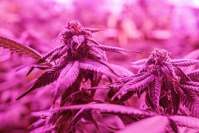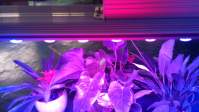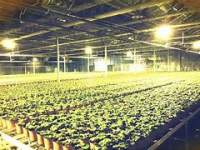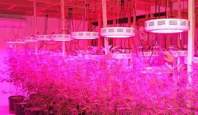LED plant light efficiently and uniformly condenses light to irradiate plants
How to realize the efficient and uniform condensed light of the LED plant light to illuminate the plants? It is said that LED plant lamps are highly efficient and energy-saving plant growth lamps. Part of the reason is that LED lamps have a much higher electro-optical conversion efficiency than traditional lamps such as incandescent lamps and sodium lamps. It is also because the spectrum of LED plant lamps can be customized, but LEDs can be used for maximum efficiency. Plant lights, or what measures can be taken?
1. Distribution of LED plant lights
LED plant lights are used to illuminate plant lights, and its purpose is to make plants grow to the ideal state of light users. Crop growers hope that their crops can grow lush and balanced. The uniform distribution of LED plant lights is also Ensure that the light energy is evenly irradiated on the unit area. Considering that the distribution of lamp beads is mainly in a single uniformly distributed LED plant lamp, its irradiation area is large, and its lamp beads are mainly composed of red and blue lamp beads. If the positions of the lamp beads with different spectrums are unreasonably distributed, It will definitely lead to large differences in the growth status of plants in multiple areas within the illumination range of the LED plant light. This is the meaning of using the LED plant light.
The distribution of LED plant lamp beads is intuitive and important. If 12 blue beads are arranged in a row, and 84 red beads are arranged in seven rows, what kind of not only effect will it be!
2. Use of physical optical equipment
The physical principles used by LED plant lights in enhancing illumination and adjusting the uniformity of illumination are mainly light reflection and light refraction. The LED plant light uses the reflection of light to increase the illumination and uniformity of light, mainly using the reflector and the metal substrate used by the COB. The principle of the LED plant light reflector is the same as the flashlight we have used, reflecting the light emitted by the light source into a beam , Increase the local light intensity, the difference is that the angle of the reflector of the LED plant light will be greater than that of the flashlight reflector, and the inner times are designed through precise calculations to ensure the light intensity and uniformity of illumination within its illumination range.
The reflective effect of the metal substrate is also to maximize the light energy emitted by the LED plant lamp beads to be used by plants, and the main reflected part is the auxiliary light, not the main beam. Of course, its role is not only to reflect light, but also to fix the lamp beads and heat dissipation. LED plant lights use the principle of light refraction to increase the uniformity of illumination and illumination. The main method is to use optical lenses to change the trajectory of light. The principle is to use light to travel from gas to solid, and then back to the gas through the solid. Change, generally use single lens and retest lens, can control the light distribution very accurately.
The advantages of LED plant lights over traditional plant growth lights are not only the issue of light efficiency and environmental protection, because it is small in size and generates little heat, and it also occupies a considerable advantage in terms of convenient dimming treatment.
Light is a kind of electromagnetic radiation. The light that the human eye can see is called visible light, which is in the range of 380nm-780nm, and the light color ranges from purple light to red light. Invisible light includes ultraviolet light and infrared light. The units of photometry and colorimetry are used to measure the properties of light. Optical tools have both quantitative and qualitative attributes.
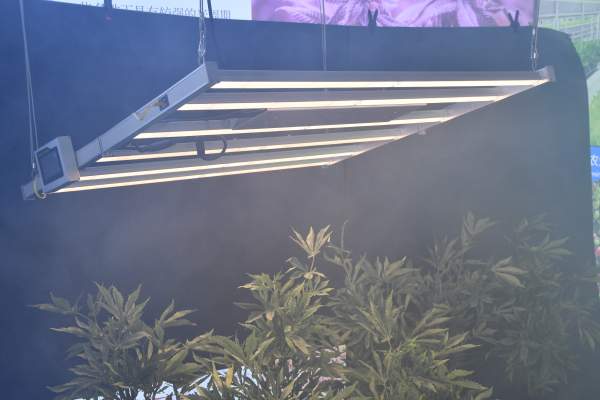
The former is light intensity and light period, and the latter is light quality and light harmonic energy distribution. Light has particle properties and wave properties, that is, wave-particle duality. Light has visual attributes as well as energy attributes. The basic measurement method of photometry and colorimetry. ① Luminous flux, the unit is lm, which refers to the sum of the amount of light emitted by the luminous body and the light source in a unit time, that is, the luminous flux. ②Light intensity: symbol 1, unit candela cd, the luminous flux emitted by the luminous body and the light source in a single solid angle in a specific direction. ③Illuminance: The symbol is E, the unit is lux lm/m2, the luminous flux of the luminous body illuminating the unit area of the illuminated object. ④ Luminance: The symbol is L, the unit is Nit, cd/m2, the luminous flux per unit solid angle per unit area of the luminous body in a specific direction. ⑤ Luminous efficiency: The unit is lumens per watt, lm/W. An electric light source is the ability to convert electrical energy into light, expressed by dividing the emitted luminous flux by the power consumption. ⑥Lamp efficiency: also called the light output coefficient, it is the most important standard to measure the energy efficiency of the lamp. It is the ratio between the light energy output by the lamp and the light energy output by the light source in the lamp. ⑦Average life: The unit is hour, which refers to the number of hours when 50% of a batch of bulbs are damaged. ⑧Economic life: The unit is hour. Taking into account the damage of the bulb and the attenuation of the beam output, the integrated beam output is reduced to a specific number of hours. This ratio is 70% for outdoor light sources, and 80% for indoor light sources such as fluorescent lamps. ⑨Color temperature: When the color of the light emitted by the light source is the same as that of the black body at a certain temperature, the temperature of the black body is called the color temperature of the light source. The color temperature of the light source is different, and the light color is not the same. The color temperature is below 3300K and has a stable atmosphere and a warm feeling; the color temperature is between 3000 and 5000K as the intermediate color temperature, which has a very refreshing feeling; the color temperature is above 5000K and has a cold feeling. ⑩Color temperature and color rendering: The color rendering of the light source is indicated by the color rendering index, which indicates that the color deviation of the object under the light compared with the reference light (sunlight) illumination can more fully reflect the color characteristics of the light source.
There are two types of color rendering: faithful color rendering, which can correctly express the original color of the material requires the use of a high color rendering index (Ra) light source, the value is close to 100, the color rendering is very good; the effect is very color rendering, it must be vivid Emphasizing specific colors and expressing beautiful life can use additive color to enhance the effect of color rendering. Since the composition of the light spectrum is different, even if the light color is the same, the color rendering of the lamp may be different.
Vision is the perception of the outside world that people obtain from the light sensation produced by the radiation that enters the human eye. Spectral optical efficiency is to evaluate the sensitivity of human eyes to visible light of different spectra, and its value is between 0-1. The human eye has the highest perception efficiency of yellow-green light with a wavelength of 555nm, while the perception efficiency of other wavelengths of light is lower, showing a normal distribution curve.
The illuminance is the luminous flux per unit area determined according to the light effect of the human visual spectrum. It is usually defined as 1 for 555nm yellow-green light, and the unit is 1x (lux). The photosynthetically effective radiation illuminance refers to the photosynthetically effective radiation energy irradiated per unit time and unit area, and the unit is W/m2.
In agricultural semiconductor lighting, light quantum flux (density) is usually used to measure light intensity. Photosynthetically active radiation (PAR) is visible light radiation in the 400-700nm band. Physiologically active radiation is radiation with a specific wavelength that can play a role in plant growth and development. The wavelength is usually 300-800nm. The part of the non-photosynthetically effective radiation in the physiologically effective radiation is close to ultraviolet radiation and far red radiation, which directly affects the photomorphogenesis of plants and the production of secondary metabolites. The photosynthetic effective light quantum flux is PPF, which can be the light quantum flux used by the photosynthesis of plants, that is, the number of light quantum in the wavelength range of 400~700nm, and the unit is umoL/s. The photosynthetically effective luminous flux density (PPFD) is the number of photosynthetically effective radiation light quanta per unit time and unit area, and the unit is umoL/m2·s. In the field of plant physiology, the number of photons is usually expressed in micromoles (umol). The spectral energy distributions such as illuminance, irradiance, and light quantum flow density are closely related, but there is no fixed conversion relationship between them. The conversion factor of common light source 1000lx to umol/m2·s is 12~19. During the day, the solar light source is 1klx=18Hmol/m2·s, and under fluorescent light, it is 1klx=12.5umol/m2·s.
Although LED plant lighting in my country started late, it has developed rapidly. Due to historical reasons, the lighting industry started very early in the Pearl River Delta region. Therefore, LED plant growth lamps have developed rapidly in the Pearl River Delta region based on the fertile soil for the development of the lighting industry. Yaorong Technology Co., Ltd. is one of the earliest enterprises in my country to invest in the R&D and production of plant growth lamps. So far, it has accumulated nearly ten years of experience in the production and development of plant lighting supplementary lamps. Although the strength of R&D and international manufacturers still exist However, with the rapid accumulation of technology and the huge advantages of China's manufacturing industry, the plant lighting products produced by our company still have a competitive advantage that cannot be underestimated in the world.


